This post outlines the differences between paint vs. primer and answers the question about if you can use primer as the finish coat of paint.
A friend asked me a question about primer that I had never thought about. Can you use primer as paint? In other words, can primer be the final coat of paint on a furniture piece or a painting project? I was giving him pointers on how to refinish laminate cabinets, so I of course told him to use primer first. After the primer dried, he liked the finish so much he didn’t want to paint over it. Can primer be used as the finish coat of paint? I had to think about this one and do a little research and I’ve outlined my conclusion below. I figured if he was asking, someone else has probably asked or wanted to know this too. I’ve outlined all my thoughts below about paint vs. primer and can primer be used as the finish coat of paint. If you are a professional painter or a home DIYer, this post will hopefully answer all your questions about the painting process with primer.
The question of whether primer can be used as a finish coat of paint arises often, especially among people looking to save time and money. While primer might appear similar to paint in terms of application, it is not designed to withstand exposure or wear as a topcoat does. The properties of primer focus on adhesion and sealing rather than durability and finish quality.
The general rule for using primer as a final coat is not generally recommended. Primers lack the components that give paint its color richness, sheen, and the protective qualities necessary for a lasting finish. Paint provides aesthetic appeal with a wide range of colors and finishes, while also making sure it has a durable layer that can resist environmental factors.
For best results, using a primer followed by coats of paint ensures a professional-looking finish that endures. I’ll go into more detail below.
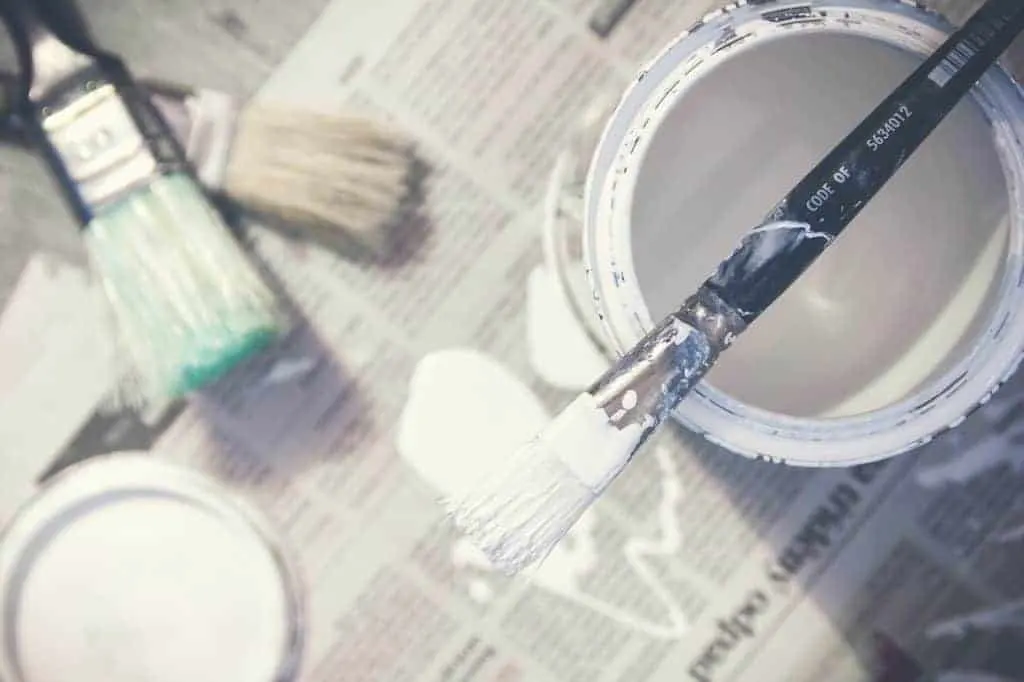
Disclosure; this post contains affiliate links. As an Amazon Associate I earn from qualifying purchases. This does not affect the price you pay. This disclosure statement refers to the rest of the Amazon links in this post. See more on my disclosure page.
Table of Contents
Exploring Primer
In painting projects, primer serves as a preparatory coating that helps paint adhere better to surfaces. Based on the project requirements, one may choose from a variety of primer types. Primer contains resins that seal to most surfaces, even porous ones, and provides a bond. This enables you to paint surfaces that would not adhere with regular paint. Since primer’s function is mainly to bond and cover porous surfaces, it is not made to withstand elements like paint. Because of this, if you leave primer without a top coat (or paint) it will deteriorate and break down, probably in a chalk like form.
Functions of Primer
Primer primarily functions to provide a suitable surface for paint to adhere to, improving paint durability and coverage. It seals porous surfaces, preventing paint from soaking in and ensures a uniform paint coat. Additionally, primer can block stains, prevent rust on metal, and reduce the number of paint coats needed. For surfaces with tough stains or those exposed to moisture, a specific type of primer can greatly enhance the final result.
Different Types of Primer
Primer is not a one-size-fits-all solution. Various formulations are designed for different materials and conditions:
- Oil-Based Primer: Suitable for wood, fiberboard, and metal. It offers excellent adhesion and stain blocking.
- Latex Primer: Best for drywall and softwoods. It provides a flexible finish and is less brittle than oil-based primers.
- Shellac-based Primers: Shellac primers are the go-to for severe stain-blocking; works well on both wood and metal.
- Bonding Primer: Ideal for surfaces that are hard to paint, helping paint adhere to surfaces that are typically challenging.
Different primers are also optimized for interior or exterior use, based on their resistance to environmental factors. It’s important to select a coat of primer that aligns with the project’s specific requirements.
Related posts about primer:
Best Primer for Wood and Wood Furniture
Do you Need to use Primer for Furniture before Painting?
Exploring Paint
In understanding paints, it’s essential to differentiate their types and recognize their specific purposes and properties. This determines their optimum use in various applications.
Types of Paint
Paints are categorized by their base and finish. In terms of base, they generally fall into two groups:
- Water-based paints: These are quick-drying and have lower levels of volatile organic compounds (VOCs). Suitable for walls and ceilings, they are known for their ease of clean-up. They are often called latex paints.
- Oil-based paints: Durable and more resistant to staining, these are typically utilized for moldings, trims, and doors. They require more time to dry and have higher VOC levels.
Concerning finish, options include:
- Flat/Matte: No sheen and helpful for hiding surface imperfections.
- Eggshell: A low-luster, smooth finish often used in living spaces.
- Satin: Offers a pearl-like sheen, ideal for high-traffic areas.
- Semi-Gloss: Reflective sheen suitable for trim and moisture-prone rooms.
- High-Gloss: Glossy surfaces are highly durable with a shiny finish perfect for surfaces needing frequent cleaning.
Purposes and Properties of Paint
Paints serve several key functions:
- Protection: Paints act as a barrier against environmental factors, protecting surfaces from moisture, UV rays, and wear.
- Aesthetics: They provide color, consistency, and texture to surfaces, playing a crucial role in the visual appeal of a space.
- Identification: Through color coding, paints can indicate pipes or wires according to industry standards.
- Sanitation: Certain paints contain antimicrobial properties, reducing the growth of bacteria and mold in sensitive areas.
The properties of paint include:
- Adhesion: The ability to stick to surfaces without flaking or peeling.
- Coverage: The capacity to evenly conceal the painted material.
- Durability: Resistance to wear and tear over time.
- Pigmentation: Determines color richness and UV resistance.
- Viscosity: Influences ease of application and flow of the paint.
Paint has what they call “pigments” which provides color and also durability to fight the elements. Also note that different surfaces will warrant different results with primer products. It’s a good idea to test a small area first before diving into any project.
Looking for more painting tips? Maybe you want a little help choosing the right type of paint.
Can paint be used without primer?
If you have a smooth surface (non porous) in good condition, some paints can be used without primer. There are loads of “paint plus primer” products on the market today that can also be called “self-priming paint.” These paints normally require a base coat (1st coat) and then a top coat (2nd coat).
That being said, I still believe in using a separate primer product first and then using high quality paint products.
I would not recommend using oil-based paints without a primer because bare wood can absorb the oil from the paint, which leads to deterioration of the wood over time.
Can you paint directly over primer?
Yes you can paint over primer as long as it’s been freshly painted within a month or so. Using paint over old primer will not work because the old primer will more than likely start to break down.
Can primer be used as the finish coat of paint?
My opinion is simply No.
This doesn’t mean you have to apply paint over it, but you do need to seal it in some form or fashion.
A quick tip; since most primers are white or gray, I would suggest using a poly acrylic top coat and NOT a polyurethane top coat. The urethane family of top coats yellow with time. This is ok if you are using it to cover wood with a yellow or red tone, but if you are covering a white or lighter surface, you don’t want any yellowing over time.
I’ve seen this a few times when people paint kitchen cabinets a lighter or white color. They seal it with poly urethane because historically it was the strongest and most durable top coat. But a few years or so down the road you can see a hint of yellow on their bright white cabinets. This is more apparent in an area that sees a lot of sun.
I’ve shared all about how to seal furniture or wood for high traffic use in another post if you’re interested.
Paint vs. Primer
- Use primer when you’re painting a porous surface or a surface that most paints won’t adhere to. Also use primer when you need to cover a dark color with a lighter one.
- Always cover primer with a top coat of sealer or paint.
- You don’t always have to use primer before paint.
- Primer and paint have different purposes, make sure you are using it right.
- Use a poly acrylic top coat when painting over a white or lighter color
Simply put;
You cannot use primer as a final coat of paint.
What happens if you don’t prime wood before painting?
If you don’t prime wood before painting chances are that the paint will look blotchy because the different areas of wood will soak up the paint unevenly. Also, over time you might get what’s called “bleed through.” Bleed through happens when the old tannins (or old paint, stain etc.) in the wood start to show through the new paint and you will see spots of color.
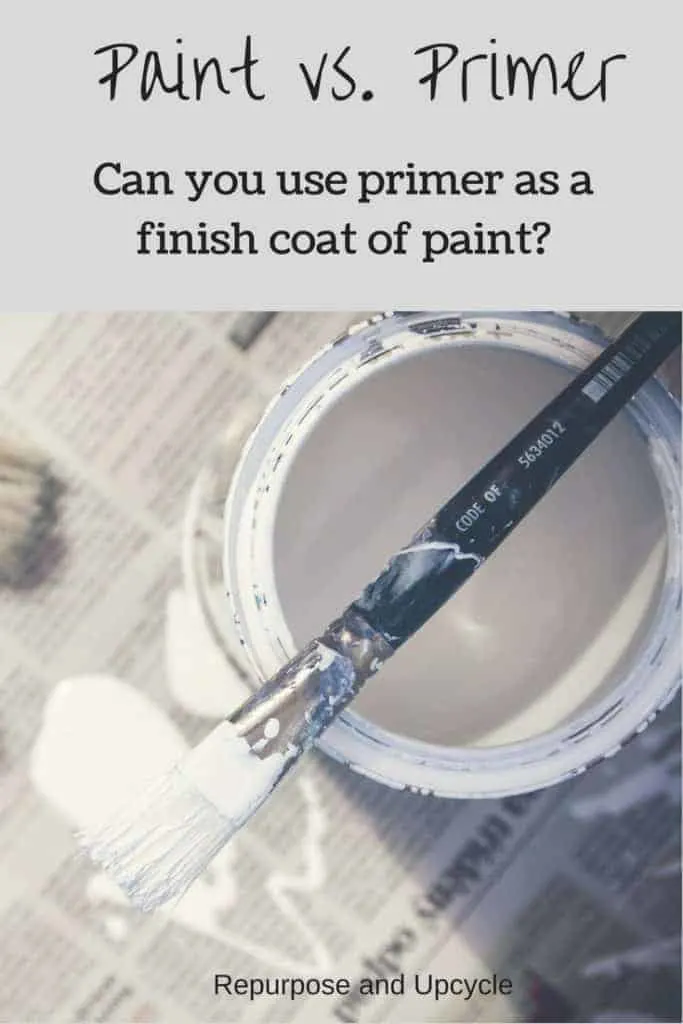
Different Products and different types of primers:
For those looking to reduce the painting time with an All-in-One paint or Paint and Primer in one, check these posts out too! Also check out loads of product reviews here.
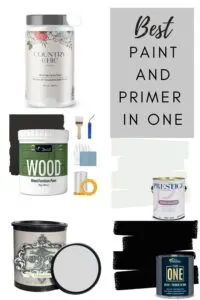
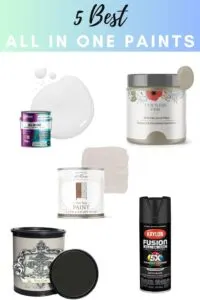
I hope this post has answered some question for you regarding primer and paint and when to use them. As always, if you have any questions, don’t hesitate to drop them below.
Thanks for stopping by,
Lindsey**
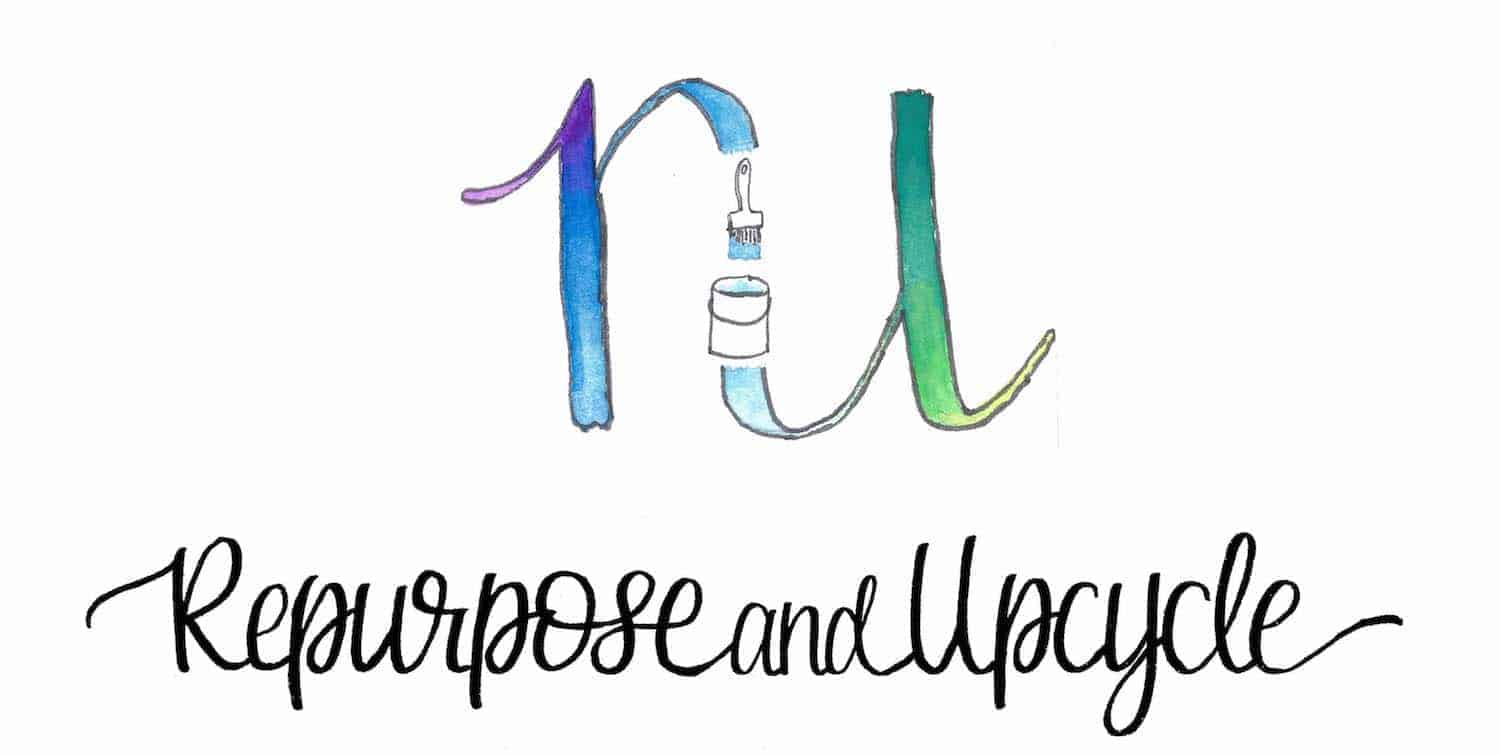
my question is do you think it’s ok to put a top coat(mine is general finishes flat-out-flat) directly over a primer. because i dont have a white paint and im too lazy to go get any.
Yes if you don’t use a paint over the primer you need a top coat. And to answer your question, yes, the top coat can be painted directly over the primer.
So why not just replace poly urethane with poly acrylic top coat. When would you use the poly urethane since it yellows with exposure. Not trying to sound dumb. Just learning as I go.
Polyurethane is a durable option for things like wood (that already has yellow tones) and dark colors that wouldn’t be as affected by a little discoloring.
Thanks so much. I too loved the look of my tinted primer inside my kitchen cabinets. I was tempted to skip the paint but your post made perfect sense and set me straight.
@dghgator,
Yup…Agreed,I used bullseye primer on my garage walls and deciced it looked goos enough…that was three years ago and still counting
-Eric
Great! Glad I could be of help. Thanks for stopping by.
What do recommend to use as top coat if the tinted primer is serving as the final color/coat?
It really depends on what you are painting. That being said, one of my favorite top coats for MOST surfaces is this: https://amzn.to/3486YZp
Thanks for the insight. I have 30 beehives I’ll be painting tomorrow and now I know why I need to paint over primer.
Glad I could be of help! Good luck!
Primer can be tinted with pigment to become a desired color.
And if the surface painted only with primer is indoors, what would make it break down if you didn’t put a top coat on it?
I just primed 3 old fluorescent light wells. I think I am done. No elements indoors and since the wells have trim, I don’t think it will be noticeable if the white paint for rest of ceiling doesn’t exactly match. Different surfaces, different lighting and not contiguous with rest of ceiling. I’ll see how it looks after I paint the rest of ceiling.
My husband had a comment about durability of primer (used kilz). Have you ever tried washing kilz off your hands? Especially after you smeared it all over your hands trying to wash the brush? The light wells are a no traffic area.
So no topcoat of paint for me in the wells and my new lights can go in sooner.
@Hobcy,
Myself too have been using pigmented primer on furniture for years giving a wonderful eggshell finish. The guys at the paint shop say it’s as good as and the water based primer is very durable. Never had a problem with wear and tear and how I see it it’s a money making scheme to then to have to put an overcoat over the top. I mix my primer in hundreds of colours and it works incredibly well.
I agree as I have used tinted primer and it went on really well and lasted as long or longer than regular paint. The primers like Kilz latex are thicker and cover better than most paints.
Since primer isn’t meant to be a top coat, It’s not formulated to withstand any cleaner or anything used on top of it. I say that, but I’m no primer specialist. I would definitely reach out to the primer manufacturer if you have any questions. I hope this helps!
So happy that I found your article. I just primed my kitchen cabinets with Zinsser Bullseye 123 gray primer. I was going to paint them gray, regardless! So really like the color of the gray primer I picked up at Home Depot that was premixed in the gray tone. Thought having gray primer would help me decide if gray painted cabinets were the way to go! I really do like the tone of this gray primer. After reading this post, I’ve decided I will use Rust-Oleum Clear Painter’s Touch Cleaar latex paint. Wish me luck!
Awesome! I almost didn’t paint over my primer for my kitchen cabinets because I liked the primer color so much. Good luck!
I didn’t think primer could be used as the final coat. Just not durable enough. Thanks for sharing with SYC.
hugs,
Jann
How long will primer last before you paint it?
How long will an exterior primer last before you need to paint it?
Good Question! I’m not real sure about how long it will last as I would imagine it all depend on the primer and the surface that it’s being applied to. Sorry I don’t have a more direct answer.
@Larry, tsp is good for cleaning so paint will stick.
Would also depend on weather. Outdoor will not last as long. I would want to do it fairly soon, but certainly within a few months if I could not finish in a few days.
I have an issue with trying to get walls in kitchen complete free of old grease. Hoping a couple coats of primer will balance what I can’t remove with TSP.
Lindsey, your post jumped out at me at #SweetInspiration link party because this is precisely what I’ve been wondering about. An added bonus, I learned about when not to use polyurethane and why! I definitely need to come back here before my next project.
I never thought about using primer as a final coat so good thing I never have. Good lesson on the difference between paint and primer. Found you on Blogger’s Pit Stop.
Excellent article. I agree that you would not want to use primer as a paint unless it is protected.
Can I use a primer instead of ultra bond or another adhesion promoters when painting with milk paint? Your thoughts?